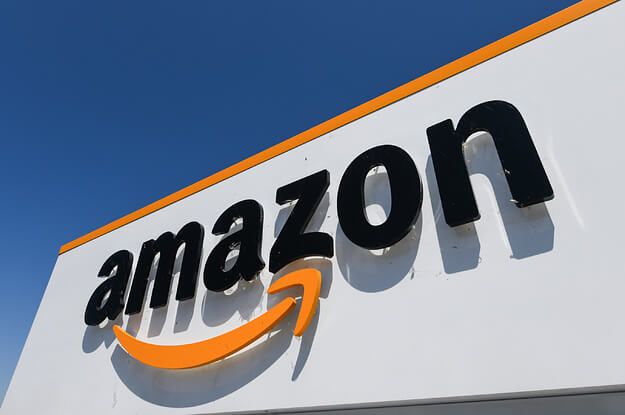Amazon Brand Registry 2.0 Practical Guide: Key Steps for Cross-Border Sellers to Prevent Hijacking and Protect Brands
 In the world of cross-border e-commerce, "hijacking" (Listing Hijacking) on Amazon has always been one of the most significant challenges for sellers. Hijackers steal traffic by undercutting prices, diluting brand value, and potentially causing issues like poor product quality, negative reviews, and even legal disputes. To help sellers combat this issue effectively, Amazon launched Brand Registry 2.0, a powerful tool designed to protect brand owners. This article will provide a detailed walkthrough of the Brand Registry 2.0 process and share key strategies for preventing hijacking and safeguarding your brand.
In the world of cross-border e-commerce, "hijacking" (Listing Hijacking) on Amazon has always been one of the most significant challenges for sellers. Hijackers steal traffic by undercutting prices, diluting brand value, and potentially causing issues like poor product quality, negative reviews, and even legal disputes. To help sellers combat this issue effectively, Amazon launched Brand Registry 2.0, a powerful tool designed to protect brand owners. This article will provide a detailed walkthrough of the Brand Registry 2.0 process and share key strategies for preventing hijacking and safeguarding your brand.
I. Core Benefits of Brand Registry 2.0
Brand Registry 2.0 is an upgraded tool introduced by Amazon to strengthen brand rights. Its key advantages include:
Exclusive Listing Control: Registered brands can lock their product listings to prevent unauthorized edits.
Proactive Hijacking Prevention: Use the "Report a Violation" tool to quickly remove hijacker listings.
Enhanced Brand Content: Unlock advanced features like A+ Content, Brand Stores, and video ads.
Transparency Program and Project Zero: Use unique codes or directly remove counterfeit listings for added protection.
II. Step-by-Step Guide to Brand Registry 2.0
Step 1: Trademark Registration (Prerequisite)
Choose a Registration Location: Prioritize your target market (e.g., USPTO for the U.S., EUIPO for the EU).
Select Trademark Classes: Ensure coverage of your product categories under the Nice Classification.
Timeline: U.S. trademark approval takes approximately 8-12 months (expedited options are available for an additional fee).
Step 2: Submit Brand Registry Application
Log in to Amazon Seller Central and navigate to "Brand Registry."
Fill in Brand Information: Include the trademark name, registration number, and product categories.
Verify Brand Ownership:
Provide a scanned copy of the trademark certificate (clearly showing the registration number and owner details).
Upload product and packaging images: Must display the brand logo, matching the trademark.
Submit proof of sales: Such as recent invoices or purchase orders.
Step 3: Review and Activation
Amazon typically completes the review within 1-2 weeks. If the information is correct, the brand status will change to "Active."
Common Reasons for Rejection: Trademark not yet active, unclear images, or mismatched brand information. Address the issues as per Amazon's feedback and resubmit.
III. Key Strategies to Prevent Hijacking
1. Lock Listing Editing Rights
After registration, use the "Brand Protection Dashboard" to claim ownership of your listings.
Add brand attributes to your listings via "Manage Your Inventory" to prevent unauthorized edits.
2. Enroll in the Transparency Program
Requirements: Complete Brand Registry and apply unique Transparency codes (provided by Amazon) to your products.
Benefits: Consumers can verify authenticity by scanning the code, and hijackers without the code will be automatically blocked.
3. Join Project Zero
Features: Brand owners can directly remove counterfeit listings without Amazon's approval.
Eligibility: Requires a strong history of successful infringement reports.
4. Monitor and Report Violations
Use third-party tools (e.g., Jungle Scout, Helium 10) to monitor listing changes.
When hijacking is detected, immediately submit evidence (e.g., trademark certificate, test buy order number) via "Report a Violation."
IV. Long-Term Brand Protection Strategies
1. Build Brand Barriers
Patent Protection: Apply for design or utility patents (e.g., for product designs or technologies).
Copyright Registration: Protect product images, descriptions, and videos with copyrights.
2. Ensure Local Compliance
Western markets have strict intellectual property laws. Ensure your products meet local regulations (e.g., FCC certification for the U.S., CE marking for the EU).
3. Build Consumer Trust
Use Amazon Brand Stores to showcase your brand story and quality control processes.
Leverage "Brand Loyalty Analytics" to optimize customer experiences.
V. Case Study: How to Effectively Combat Hijacking
Scenario: A home goods brand completed Brand Registry but found multiple hijackers undercutting prices and stealing the Buy Box.
Steps Taken:
Enrolled in the Transparency Program, generating unique codes that removed hijacker listings within 48 hours.
Submitted test buy order numbers via "Report a Violation" to prove product discrepancies.
Activated Project Zero to directly delete remaining counterfeit listings.
Result: All hijackers were removed within a week, and the brand's traffic increased by 35%.
VI. Conclusion: Branding is the Ultimate Defense in Cross-Border E-Commerce
Amazon Brand Registry 2.0 is not just a defensive tool but a springboard for global brand growth. By combining Brand Registry, the Transparency Program, and Project Zero, sellers can effectively combat hijacking while leveraging A+ Content and brand analytics to boost conversions. However, brand protection is a long-term battle. Only by continuously improving products and strengthening intellectual property strategies can sellers thrive in the competitive world of cross-border e-commerce.
Tip: Regularly check your Brand Registry status and stay updated on Amazon policy changes, such as the 2025 introduction of the "Brand Health Dashboard" for real-time infringement monitoring.
Share this page
